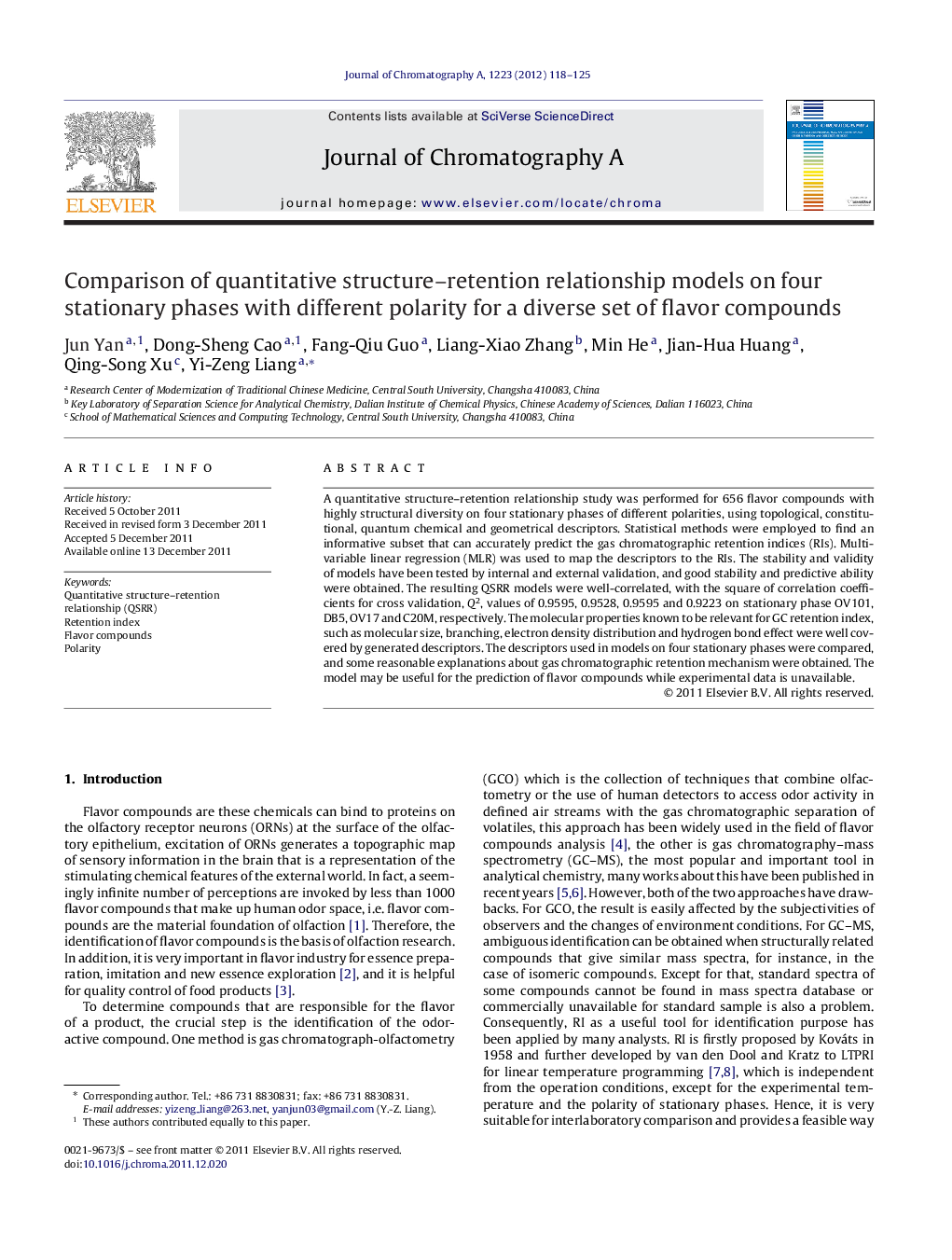| Article ID | Journal | Published Year | Pages | File Type |
|---|---|---|---|---|
| 1202985 | Journal of Chromatography A | 2012 | 8 Pages |
A quantitative structure–retention relationship study was performed for 656 flavor compounds with highly structural diversity on four stationary phases of different polarities, using topological, constitutional, quantum chemical and geometrical descriptors. Statistical methods were employed to find an informative subset that can accurately predict the gas chromatographic retention indices (RIs). Multivariable linear regression (MLR) was used to map the descriptors to the RIs. The stability and validity of models have been tested by internal and external validation, and good stability and predictive ability were obtained. The resulting QSRR models were well-correlated, with the square of correlation coefficients for cross validation, Q2, values of 0.9595, 0.9528, 0.9595 and 0.9223 on stationary phase OV101, DB5, OV17 and C20M, respectively. The molecular properties known to be relevant for GC retention index, such as molecular size, branching, electron density distribution and hydrogen bond effect were well covered by generated descriptors. The descriptors used in models on four stationary phases were compared, and some reasonable explanations about gas chromatographic retention mechanism were obtained. The model may be useful for the prediction of flavor compounds while experimental data is unavailable.
► The RI of flavor compounds was studied on four stationary phases. ► The descriptors were explained from gas chromatographic retention mechanism. ► Topological descriptors make a major contribution in all cases, and electrical related descriptor become more and more important with the column polarity increasing.
